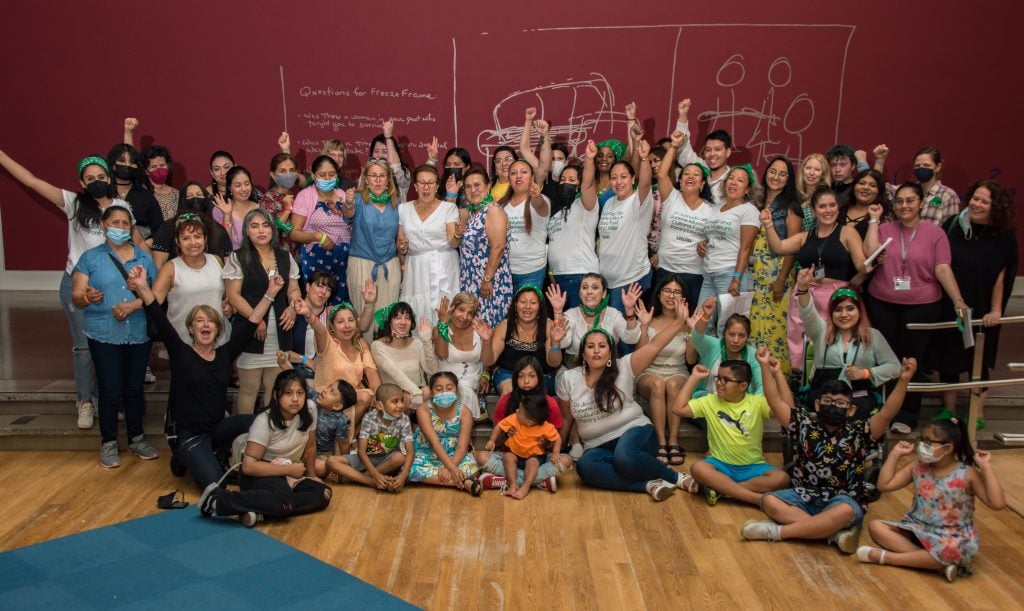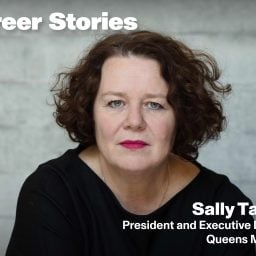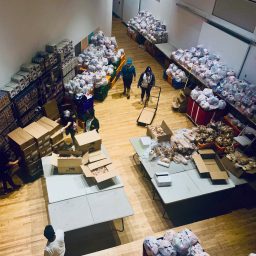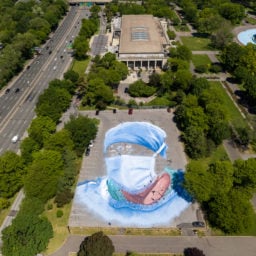In 2021, the Queens Museum launched an ambitious 18-month artist residency program as a response to the pandemic and the previous year’s George Floyd protests. The six emerging artists chosen from an open call to participate in the Year of Uncertainty (YoU) program would collaborate with nine local community organizations.
Each received a $20,000 budget to make work to show at the museum, and would receive mentorship from an impressive roster of 12 artists, activists, writers, and scientists who would act as “co-thinkers,” including Sable Elyse Smith, Xaviera Simmons, and Guadalupe Maravilla.
But despite the inspiring-sounding framework, a recent report from an arts group called Arts Union has delivered a searing critique of the YoU residency, and the institution’s broader work with the community, including the food pantry it runs in partnership with La Jornada, a volunteer-led hunger-relief organization from nearby Flushing.
“This report details a failure of institutional leadership from the director to the board. We discovered mishandled sexual harassment, a plethora of broken promises, and an ultimate failure to uphold the mission of the Queens Museum,” wrote Arts Union in the report.
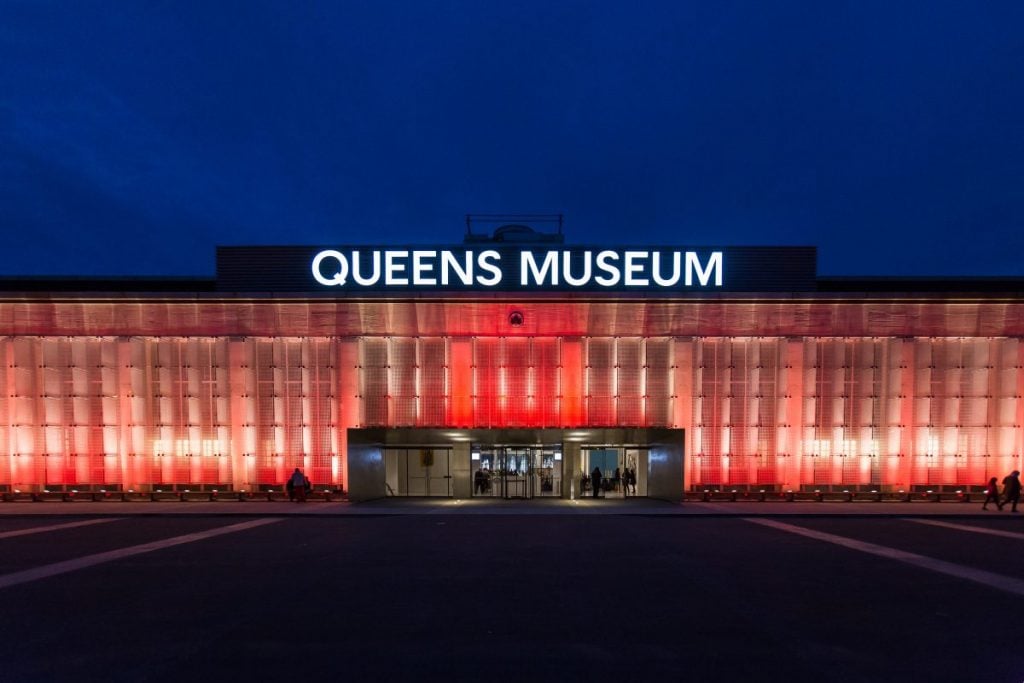
Queens Museum facade at night. Photo by Scott Rudd, courtesy of the Queens Museum.
Founded in 2020, Arts Union has a six-person volunteer organizing committee—none of whom agreed to be named—and has said it has worked on internal projects with hundreds of artists and arts workers at various organizations. It describes itself as “a democratically controlled membership organization seeking to build power, solidarity, and organize workers within the global art industry.”
The group, which is not affiliated with the Queens Museum, began its investigation in December 2021, after one of the YoU residents reached out to the organization with concerns about the program.
“I think that the museum took advantage of the George Floyd moment,” one of the YoU co-thinkers and a source for the Arts Union report told Artnet News. (They asked to remain anonymous.) “I think they were looking for resources, and I think that they tricked people.”
But not all of the YoU artists stand behind the report and its negative conclusions.
“The YoU program was not perfect,” one of the artists-in-residence, speaking anonymously, told Artnet News. “We did have a lot of frustrations during the program. But the program was new, and it was during COVID.”
The artist, who Arts Union did not interview for its report, was on the whole grateful to have participated. “As an emerging artist, I appreciated the opportunity and support,” they said. “This report is more like some individual artists’ dissatisfaction with the museum director [Sally Tallant]. I don’t necessarily share the same experience.”
Sally Tallant came to the Queens Museum in early 2019 after working for the Liverpool Biennial, which involved working closely with community groups and organizations.
Founded in 1972, the Queens Museum has community engagement built into its DNA—and that’s only grown more important in recent years as the borough became the most culturally diverse county in the country, with 165 distinct languages and dialects spoken by residents.
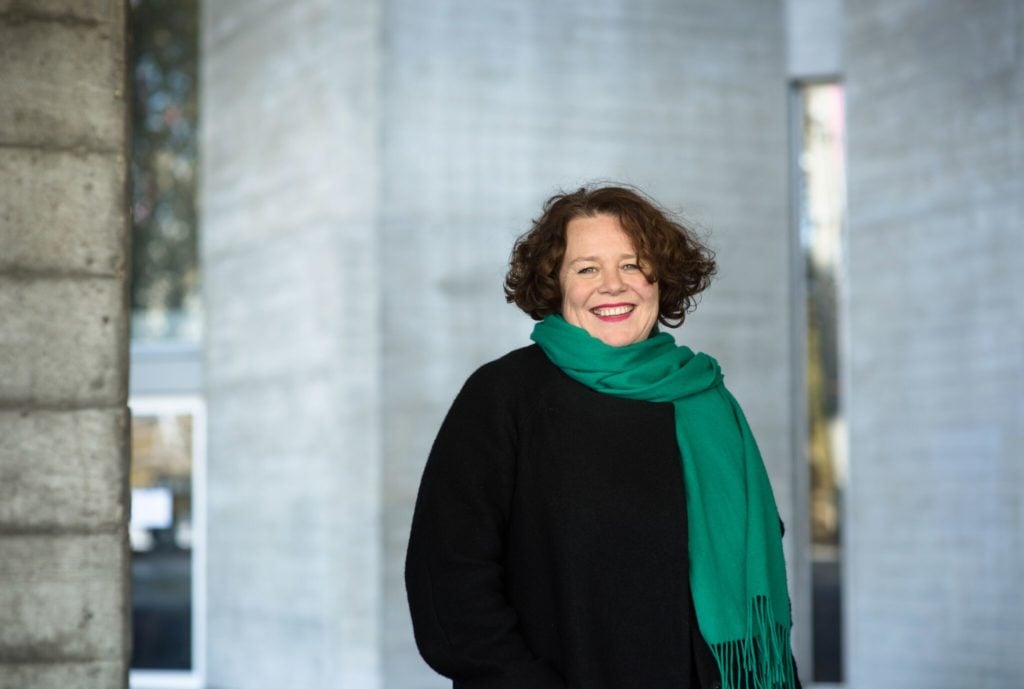
Sally Tallant. Photo by Hugo Glendinning, courtesy of the Queens Museum.
“We are building a museum that prioritizes artists who are leading and engaging in conversations about social, racial, environmental, disability, language and climate justice, critical pedagogy, and the value of art,” Tallant told Artnet News in 2021. “We are working with artists that can connect to our hyper-local, international communities.”
But it is the very commitment to this kind of work—and the question of whether the museum is doing enough to stand up to its lofty ideals—that has brought the institution, which is currently the midst of a $69 million expansion and renovation, under scrutiny.
The Arts Union interviewed museum staff, community partners, three participants in YoU, and one co-thinker. It also conducted a staff-wide learning session at the museum and was in conversation with leadership about the findings of the then-ongoing investigation.
Two former YoU residents who were among Art Union’s sources have since become part of its six-person organizing committee, but were not involved in authoring the report.
Arts Union made five recommendations to the museum, including paying the volunteers from the hunger-relief group La Jornada, creating a community board to “to hold the museum accountable,” and providing staff members one paid hour a week to meet to discuss the possibility of unionizing.
The Queens Museum, the report argued, should have been more willing to implement the suggestions and ideas that grew out of the YoU program—particularly when it came to creating new structures to facilitate work with local organizations.
“When people wanted to actually take these things further, the museum basically dismissed them,” the co-thinker said. “It’s very egregious because it doesn’t live up to what the museum asked people to do, which was rethink the museum’s relationship to the community.”
The report also found that when one YoU artist accused a nighttime security guard of sexual harassment, “HR’s reporting procedures were unresponsive,” until, they said, the NYC Commission on Human Rights got involved.
The museum disputed this, saying it “conducted an investigation immediately upon receipt of the complaint.” The security guard was dismissed.
“The Queens Museum is deeply committed to fostering an inclusive, equitable, and safe culture for our community of artists and staff,” a representative for the museum wrote in an email to Artnet News. “The museum consistently surveys staff, solicits feedback, conducts trainings, and has an open door policy for our employees. We take any concern seriously, and work to address such matters in a swift and equitable way.”
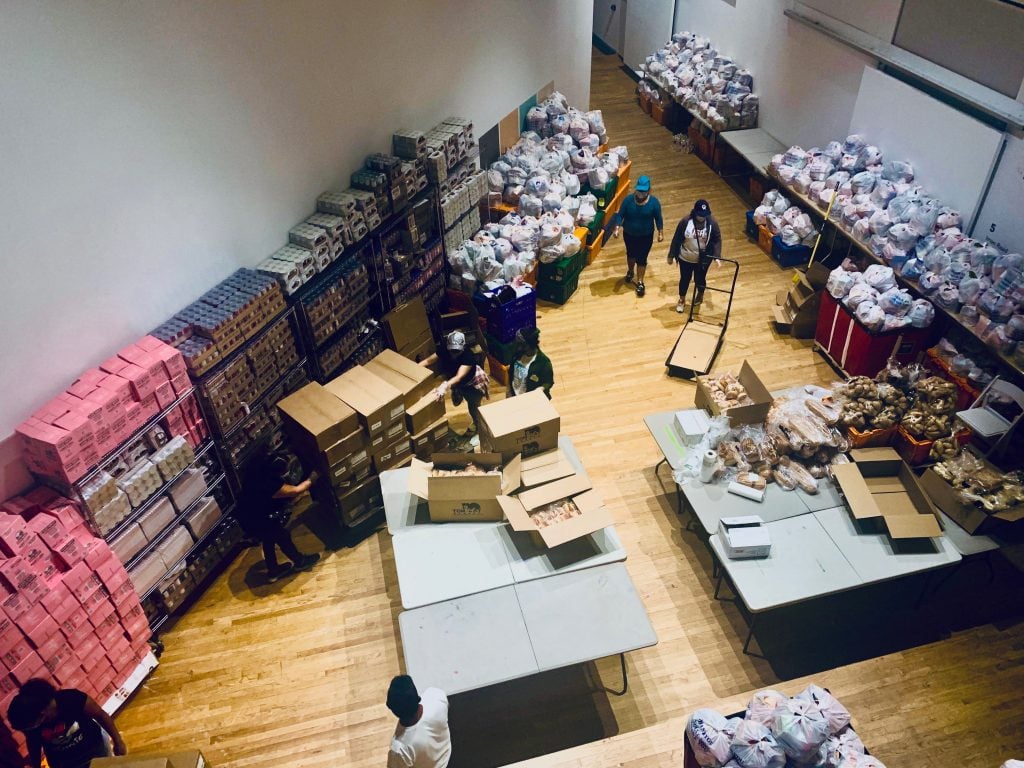
The La Jornada Together We Can Food Pantry at Queens Museum. Photo courtesy of the Queens Museum.
The Queens Museum is located in the borough’s Corona neighborhood, home to many essential and undocumented workers, and one of the worst-hit by the pandemic. Though the museum closed for over six months, it began hosting the weekly food pantry in June 2020, responding to the dire need in its community.
The food pantry has since become a weekly fixture of the museum, serving between 200 and 700 families each week. About 30 La Jornada volunteers handle sorting and distributing the food. In addition to donating its space, the Queens Museum has a $50,000 annual budget for “cultural food pantry programming” and one full-time and one part-time staff member, both paid, who support the food pantry operations.
Some YoU artists asked the museum to pay the La Jornada volunteers. The report accused the museum of receiving an unearned public relations boost by hosting La Jornada each week and “exploiting community volunteers when it has mechanisms to easily pay them.”
“The museum has undocumented people who are volunteering for free. If you go there on a Wednesday, it’s heartbreaking to see the line and to know that all the people who are stocking food are volunteers and the museum won’t pay them,” the co-thinker said. “I don’t want these beautiful women to labor for three years so that the museum can put images of it on their social media, but then not pay them a living wage.”
La Jornada’s executive director, Pedro Rodriguez, sees it differently. “To say that people should get paid to do volunteer work is wrong, because then they are not volunteers, they are workers,” he told Artnet News. “Here, New Yorkers are helping New Yorkers on a volunteer basis—helping the poor and immigrants.”
Rodriguez himself is unpaid, although the organization does have seven paid part-time employees. He believes that volunteerism is a necessary part of La Jornada’s work.
“It would be great if there was no need to be giving out food. But people go to bed hungry in the county of Queens, New York, in the richest country in the world,” he added. “The Queens Museum could be renting the space. There are all these other things that they could be doing instead of helping the poor.”
Artnet News reached out to the other community organizations involved in YoU, but had not heard back as of press time.
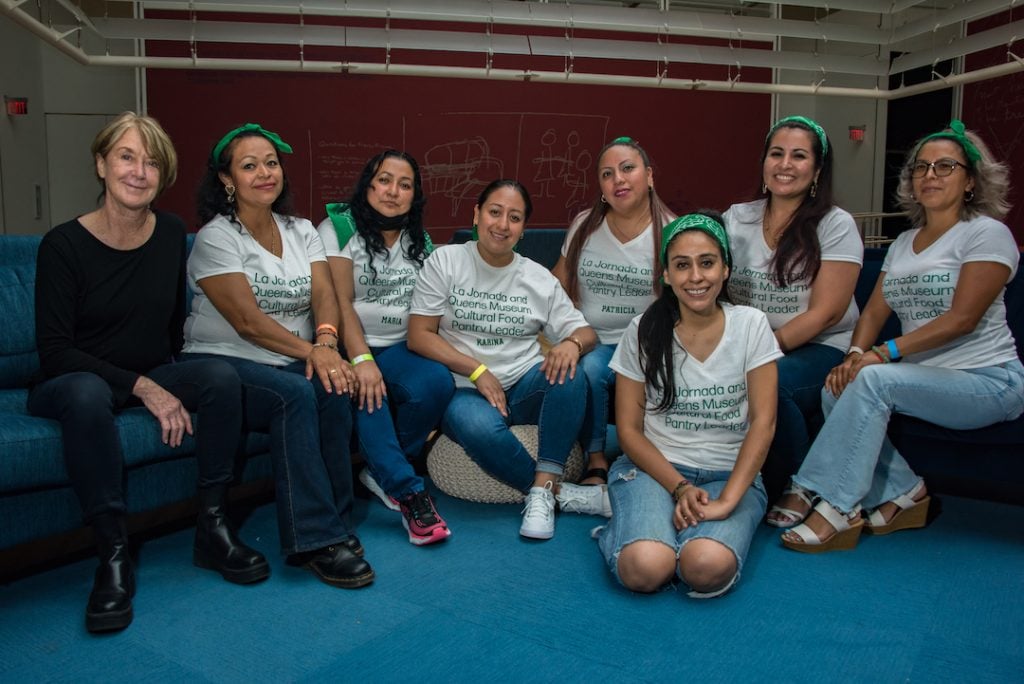
Suzanne Lacy with the Líderes leaders of the La Jornada Food Pantry for her “A Strong Woman in Queens” project. Photo courtesy of the artist.
Social practice artist Suzanne Lacy, who was another a YoU co-thinker, also found flaws in the report’s characterization of the volunteers. During her 2022 solo show at the Queens Museum, she made a project called “A Strong Woman in Queens” with the head volunteers from La Jornada, a group of about 12 women who called themselves Líderes (Spanish for leaders).
Lacy applied for, but did not receive, a $100,000 grant that would have included six months of compensation for the participating Líderes. (Similarly, the museum told Artnet News it “has not been successful” in efforts to fundraise for the food pantry, and noted that it has received only one $5,000 donation to date.)
“These particular women are very proud of their role as volunteers and leaders in their community,” Lacy told Artnet News. “We can sometimes inadvertently belittle people’s dignity by suggesting they are poor, unpaid, and exploited in the context of what they see as their community advocacy work at the food pantry.”
“Nobody goes to MoMA and says, why aren’t you paying poor people?” Lacy added. “MoMA doesn’t have a program like this. MoMA isn’t volunteering their space. MoMA deals with high-end artists, and that’s the end of the story.”
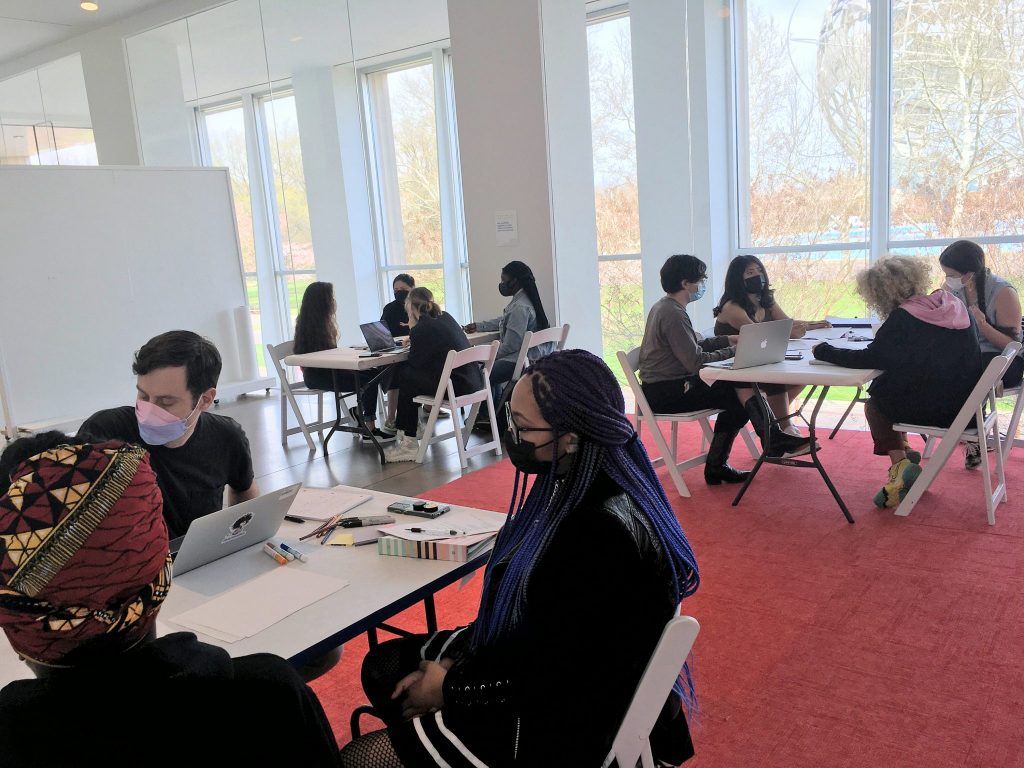
An education workshop organized by Year of Uncertainty artist-in-residence Gabo Camnitzer at the Queens Museum. Photo courtesy of the Queens Museum.
The artist who was not interviewed by Arts Union but spoke to Artnet News did not challenge the report’s findings that YoU “meetings were frequently tense and emotionally fraught, with frustration expressed by both staff and artists,” noting that “everybody got so upset and [was] crying.”
“I still feel like most of the time [Tallant] was trying to do something different, trying to nail down how to build a connection between artists and the community, which not a lot of institutional museums are actually doing,” the artist added. “The director is very supportive. Even after the program ended, she would go to other shows we had. She showed up—it’s not every other director who would do that for you.”
“The director has always listened to our concerns and what we need,” Rodriguez added.
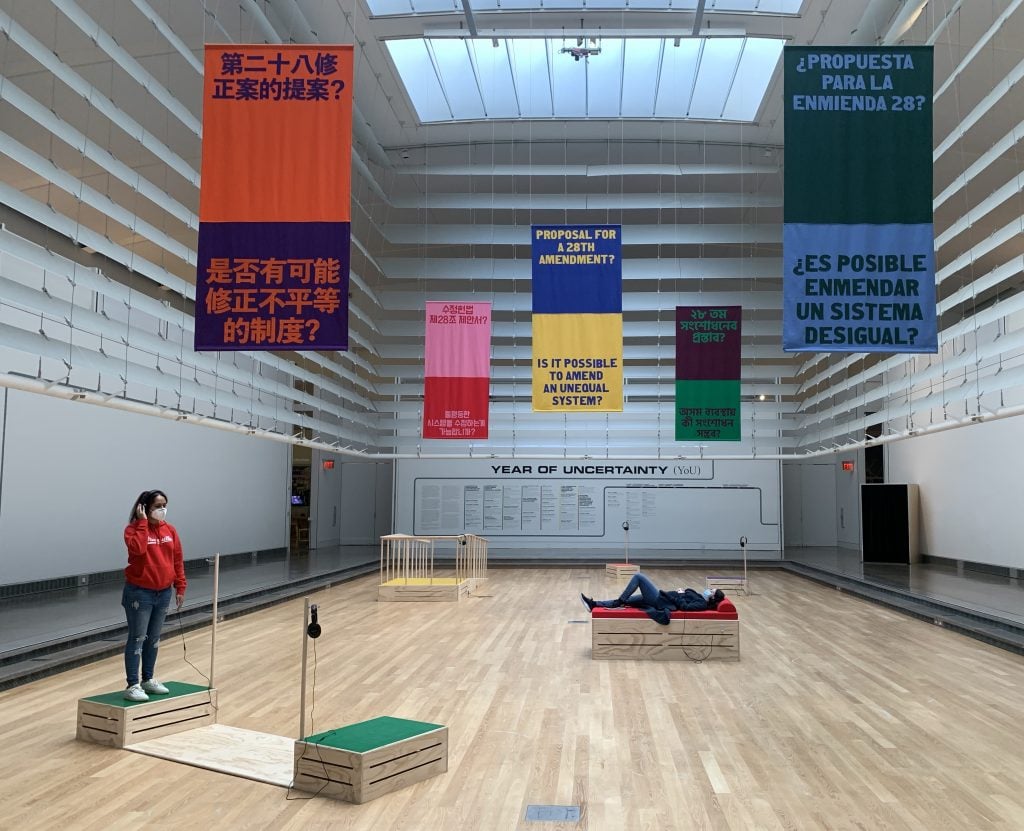
Alex Strada and Tali Keren, Proposal for a 28th Amendment? Is it Possible to Amend an Unequal System? in “Year of Uncertainty (YoU) — Phase I: Participate & Build.” Photo courtesy of the Queens Museum.
The museum has also raised wages and improved benefits under Tallant’s tenure. In 2023, wages increased by 9 percent for all staff except Tallant and the COO. There are also full benefits for both part- and full-time staff, including retirement and pension benefits in addition to medical, dental, and vision. The museum says that employee satisfaction surveys are always high.
“[Tallant] is definitely on the same side as the people who are in the process of critique,” Lacy said. “To see this museum attacked for these programs seems counterproductive to me by leftists.”
But some still believe the museum can do more. “It’s unfortunate that [museum leadership] aren’t being more proactive in making these changes,” the co-thinker added. “They asked people to make suggestions. They asked co-thinkers, they asked artists to do the work, but then they won’t see it through.”
More Trending Stories:
A British Couple Bought Two Vases for $10 at a Thrift Sale. They Turned Out to Be Art Nouveau Collectibles Worth 150 Times That
A Museum Has Renamed a Vegetable Still Life by Van Gogh After a Chef Spotted Something Was Off About the Onions
An X-Ray Scan of a 16th-Century Bronzino Painting of Duke Cosimo de’ Medici Has Revealed a Mysterious Underlying Portrait
‘He Was Hungry’: A Korean Art Student Untaped Maurizio Cattelan’s Infamous $150,000 Banana From a Museum Wall and Ate It
Art Industry News: A Rare Blue Diamond Priyanka Chopra Jonas Showed Off at the Met Gala Could Fetch $25 Million at Auction + Other Stories
A Low-Key Collector Kept 230 Classic Cars Hidden Away in a Dusty Old Church. The Astonishing Trove Could Fetch Millions at Auction
Christie’s Neglected to Reveal the Ugly History Behind Its Sensational Planned Jewelry Auction. Then a Billionaire’s Wife Complained
See the Rare Keith Haring Drawing—Measuring a Massive 125 Feet—That Is Going on View in Amsterdam for the First Time in 30 Years
How Lavinia Fontana Broke Renaissance Tradition to Become the First Woman Artist Known to Depict Female Nudes—and Earn Equal Pay as Men
